Legendary artist Mmakgabo Mmapula Helen Sebidi’s stolen art works back home after more 30 years hidden in a rural Swedish school store room
You can view ‘Ntlo E Etsamayang’ from 6 April to 17 May 2024 at the UJ Art Gallery on the University of Johannesburg’s Kingsway Campus in Auckland Park.
By Edward Tsumele, CITYLIFE/ARTS Editor
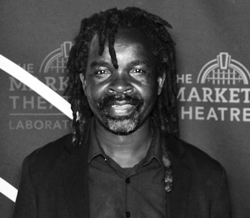
The proceedings started well, with academic Professor Kim Berman introducing the other dignitaries after guests and thanking the Sweden Embassy in Pretoria for their assistance in bringing back the art works, after which she introduced the guest of honour herself, Makgabo Mmapula Heleni sebidi. Berman explained that these works were important to Sebidi, which she created in her early practice.
However as the circumstances were explained as to how the works ended in Sweden, the plot continued to thicken. Yes this was a celebration of a treasure trove of works, the fact that the 28 pieces of art works were eventually discovered hidden in a rural Swedish school store room, still intact, in their original state, and now, were back home, this definitely called for a celebratory party.
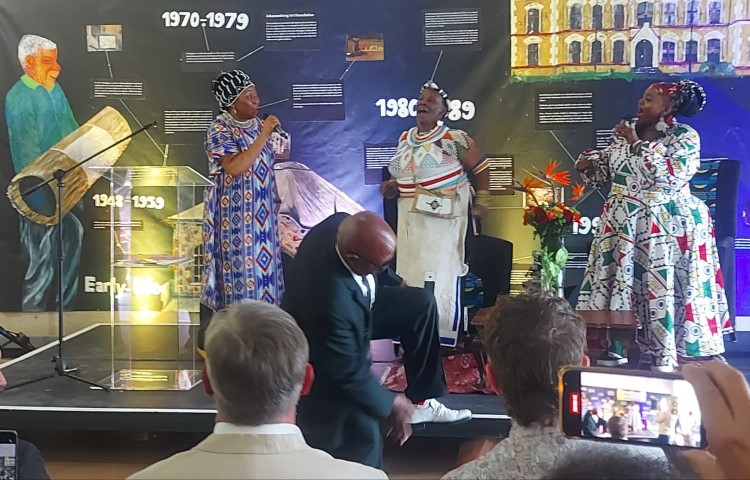
However what could not be hidden was the sad reality that these works were almost lost, having been reported stolen 30 years ago under circumstances that in reality could be called an art heist. A failed bid to illegally dispose of the art works by the individual behind the theft.
And so even as those who gathered at the University of Johannesburg’s Gallery in Auckland Park on Saturday, April 6, celebrated the return of these works back home, the4 fact that they were almost lost forever was a sad reality we all had to keep at the back of our minds. So not even the powerful vocal rendition by a really talented solo musician and by celebrated poet Gcina Mhlophe, who came all the way to be at this occasion to celebrate with her friend Sebidi for the return of her children, as she calls these works, our minds kept on reminding us that this is a bitter sweet story of an art heist that did not go the way of those who organised it.
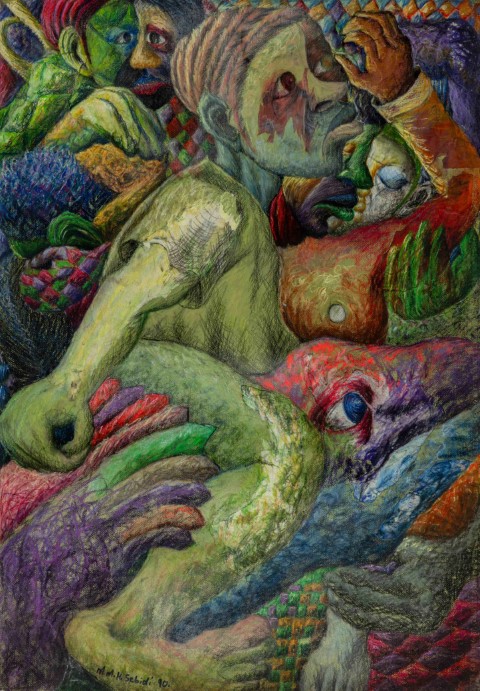
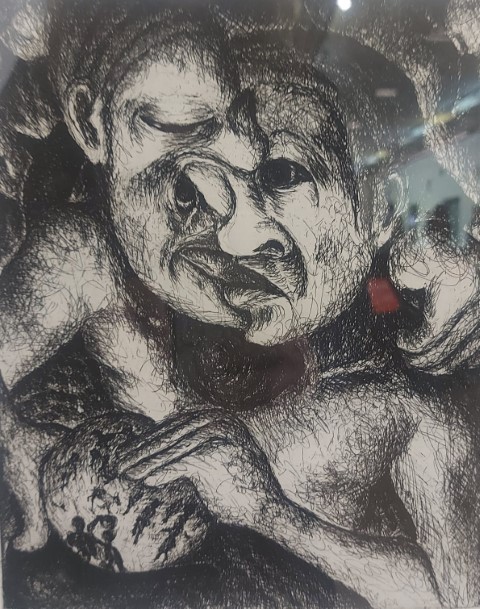
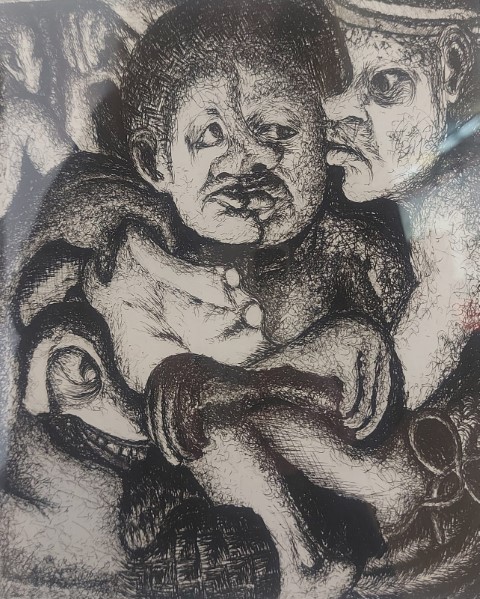
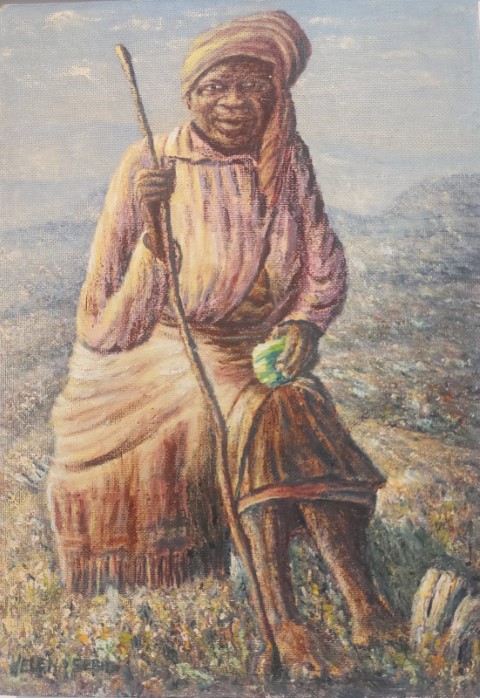
And in a twist of ironies, the art works managed to outlive the person who had stolen them as he is said to have gone to the grave, living this dark past behind him, contained in these art works, Sebidi’s children’s souls. The works simply refused to be exiled forever in a foreign country as the yearning to be back home became stronger with each passing day that they were in the dark space in the store room. Home beckoned.
And indeed eventually they have found their way back home. But it became clear from the speeches delivered during this welcoming party of the lost art works, by several; speakers, that this was a collaborative effort by several people, including Berman who is a professor of art at the university of Johannesburg, and is co-founder of the Artist proof Studio, Master of Arts student Gabriel Baard, who together with Berman are co-curators of this exhibition, Everard read gallery, to which Sebidi is signed, Professor Andries Oliphant, who has been part of the efforts to unveil the mysterious disappearance of these art works by writing extensively about the issue in South African and Swedish publications, and therefore rendering the possible public selling of the art works by those behind the heist impossible.
And so when Sebidi joined Mhlophe on stage in dance, it was both a dance of celebration and for the return of the works, as well as dance of sadness contemplating what could have to the mental health of the artist if these works were not found and reunited with their creator.
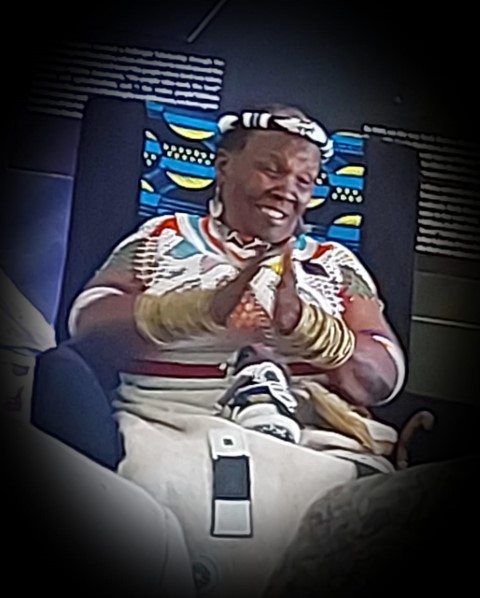
And because of this triumphant return of the almost forever lost art works, the University of Johannesburg Art Gallery in partnership with Everard Read Gallery and the Embassy of Sweden, Pretoria, proudly presents: Ntlo E Etsamayang (The Walking House), a compelling exhibition co-curated by Gabriel Baard and Prof. Kim Berman. This exhibition honours the remarkable artistic journey and commitment to Indigenous Knowledge Systems of Mmakgabo Mmapula Helen Sebidi.
In essence this exhibition commemorates the recovery of the 28 lost artworks, discovered at the Nyköping Folk High School after 32 years of their disappearance in Sweden.
Ntlo E Etsamayang’ is a triumphant celebration of Sebidi’s artistic journey, confronting themes of self-positioning, power, responsibility, and healing. This exhibition reflects on the exchange of knowledge between South Africa and Sweden, highlighting Sebidi’s dedication to facilitating communication of the socio-political conditions that govern day-to-day existence.
Sebidi’s artworks serve as a powerful reminder of the enduring connections forged through artistic expression and cross-cultural dialogue. These artworks not only reclaim lost masterpieces to the public eye but crucially resurrect a critical chapter in the national artistic consciousness. Each artwork communicates an acute and unbounded search into the relationship between humanism and spiritualism of the contemporary black African lived experience.
This exhibition highlights not only Sebidi’s early artistic endeavours but also a pivotal juncture in her practice, heralding a significant moment of stylistic transformation into a new idiom that would pulsate with energy; part figuration, part abstraction, yet continuously seeking to escape the boundaries of both. Her art depicts the disordered and often uncomfortable process of decolonising, through which she has cultivated a visual language that compels us to feel things and perhaps even devote our own lives to the cause.
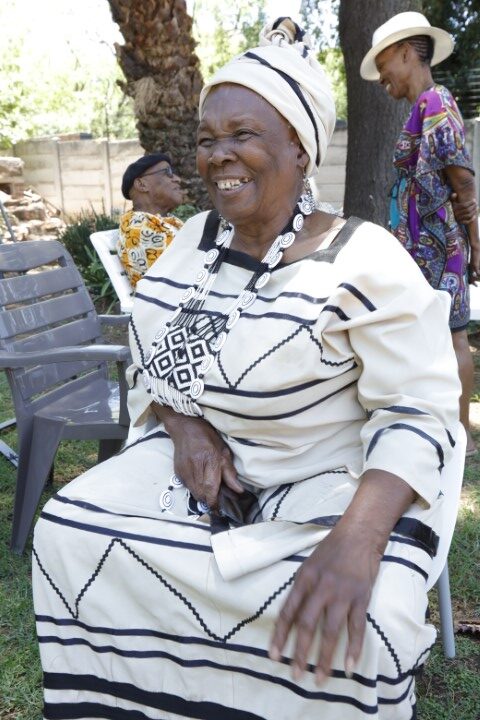
But who is this artist?
Mmakgabo Mmapula Helen Sebidi was born in 1943 in Marapyane (Skilpadfontein), in the Hammanskraal area of the Northern Transvaal.
As her mother was working in the city for much of her childhood, she grew up with her grandmother, who taught her the values that would guide and sustain her life. This includes the channelling of spirit back into the world through hard work, the commitment of the self to the community, but most of all through acts of creativity – whether this be cooking, making mud walls, creating murals, making pots and calabashes, weaving, beading, dress-making, drawing or painting.
For Mmakgabo Sebidi, the artist starts from a root of pain and conflict and works her way towards the redemption of both herself and those around her through the act of making. The creator becomes invisible during this process and is the channel through which the spirit world flows. The artwork can be seen as the trace of this redemptive journey.
Mmakgabo spent much of her young adult life as a domestic worker in Johannesburg. She spent her spare time making dresses and knitting. When a German employer starting painting, Mmakgabo expressed an interest in painting herself and was given her first set of oil paints. She then sought lessons and joined the art classes of John Koenakeefe Mohl before returning to Marapyane to look after her ailing grandmother. The following decade would see her developing and refining her art in the rural areas, returning to Johannesburg only to exhibit her work – first at Zoo Lake, then at the Art Foundation and finally the Everard Read Gallery, Johannesburg – and to buy more materials.
Through the Art Foundation, Mmakgabo won a Fulbright Scholarship, which led to a tour of America, where she met up with the ‘stolen people’ (African Americans), ‘the people whose land was taken from them (Native Americans) and those who work the land (farmers and agriculturists). She concluded that we have far more in common than whatever separates us and that all the lessons she has needed in her life were available to her through the teachings of her grandmother and her community. That same year she also won the Standard Bank Young Artist Award.
Mmakgabo is without question an inspiration and pioneer to the younger generation of South African artists. Working predominantly in pastel, acrylic and oil paint, she has developed a distinct style that uses vibrant juxtaposed colour, distorted perspectives, human and animal figures, dream images – often in a pointillist, stippled style of pastel or paint application. More recently she has returned to sculpting in clay and this exhibition features the first of her sculptures ever to be cast in bronze.
Today Mmakgabo Sebidi is based in Johannesburg, where she continues to make work and spend much of her spare time helping to inspire and encourage the younger generation – especially of artists. She is represented by the Everard Read and CIRCA galleries in Johannesburg, Cape Town and London.
‘Ntlo E Etsamayang’ will be on display from 6 April to 17 May 2024 at the UJ Art Gallery on the University of Johannesburg’s Kingsway Campus in Auckland Park.
Thereafter, the walk-about dates will be as follows:
10 April 2024, 12:00-13:00
13 April 2024, 11:00-12:00
20 April 2024, 11:00-12:00
4 May 2024, 12:00-13:00
11 May 2024, 11:00-12:00










